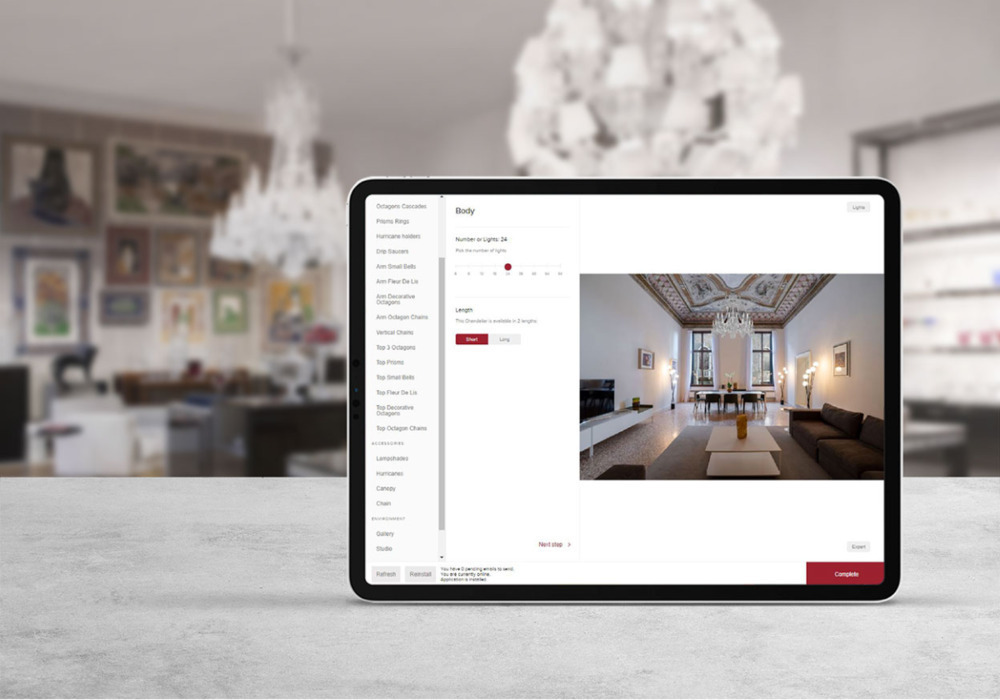
How 3D marketing can help raise your conversion rates (2024 update)
Table of content
This article was updated in January 2024 by Hugo Rimélé.
In a study by Forbes, 3D marketing was shown to increase the conversion rate of brands by 40%.
Just read that sentence again. That’s right — 40%.
But that's not all. With the rapid rollout of 5G, the landscape for 3D technologies in marketing is evolving at an unprecedented pace, presenting fresh opportunities for businesses ready to embrace innovation.
3D advertising is an effective way for businesses to communicate their message and attract potential customers. With 3D marketing, advertisers can create an experience that is more memorable than 2D ads.
This blog post will discuss what 3D marketing is and why it's important for brands. It will also provide some examples of how 3D advertising has been used in campaigns as well as steps on how you can start your campaign.
What is 3D marketing?
3D marketing encompasses various 3D communication techniques used by brands today to enhance their marketing strategy and customer experience through immersive and interactive experiences.
Here are the most crucial 3D technologies currently available for 3D visualizations in marketing:
- Augmented Reality (AR): Projection of a 3D object embedded in a real image or video, usually visible through a webcam or smartphone. For instance, a 3D chair projected into a real room.
- Virtual Try-On (VTO): Utilizing the same core technology as Augmented Reality, but with body tracking. For example, you can try on a 3D ring on your hand or a 3D watch on your wrist over the Internet using your smartphone's webcam.
- Virtual Reality (VR): VR glasses immerse you in a 360° 3D visualization. Virtual Reality (VR) creates a simulated environment and interactive experience in a three-dimensional space.
- 3D product configurators: Interactive 3D visualization of products for personalization, applicable on e-commerce sites or in stores.
- 3D Billboarding: An optical illusion of 3D advertisements projected on illuminated displays.
- 3D Advertising: All real-time or precomputed 3D visualization techniques for advertising. Real-Time 3D marketing is a form of digital marketing that adds interactivity and agility, allowing you to build a very strong relationship with your customers.
As you may know, 3D technologies are now inherently integrated into web technology, thanks to WebGL, and 3D assets are standardized with the GLTF file format. This means that 3D products and configurators have become the third medium, following product images and videos. This new medium presents a wealth of opportunities and features.
Real-time 3D Marketing Unleashes a New Engagement Era
Firstly, interactivity is key. Real-time 3D marketing empowers consumers to engage with the product. In a real-time 3D marketing campaign, customers can interact with the product by dragging and orienting the object, viewing it from all angles.
3D interactive advertising is becoming a major player in the marketing game, and it's only gaining momentum. This new technology in the digital marketing realm leads to higher sales and conversions than other forms of advertisements (such as banners, copies, videos, and images).
3D marketing has been used successfully in many different industries such as furniture, jewelry and fashion.
Augmented Reality and Virtual Try-On Shaping the Future Landscape
Augmented Reality (AR) and Virtual Try-On (VTO) revolutionize the game by bridging the gap between customers and products through cutting-edge technology.
Who hasn't dreamt of casually tossing furniture into their home, ensuring the color and shape align with their taste and needs? Or experiencing the comfort of trying on a ring or bracelet directly on an e-commerce website?
Thanks to today's 3D product visualization technologies, you can do this with a single click.
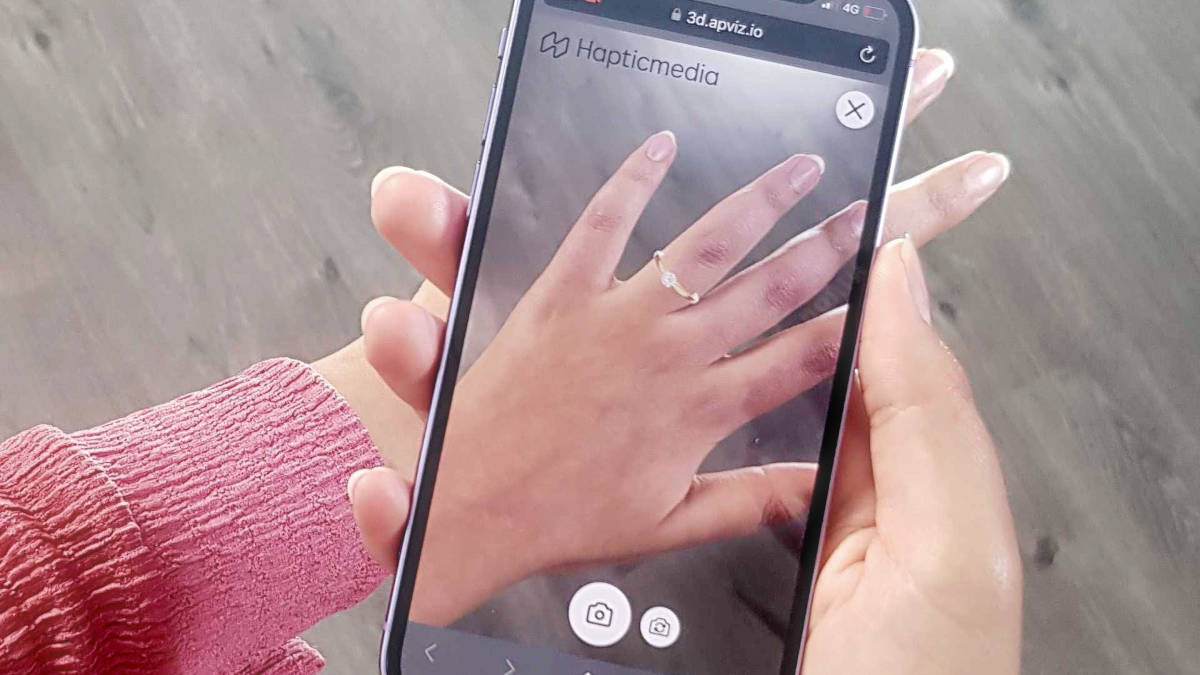 Apviz Virtual Try-On solution for ecommerce
Apviz Virtual Try-On solution for ecommerce
Harnessing the Power of Digital Products
The digital product is a virtual representation of a customized product that exists only through its definition and the combination of consumer choice and manufacturer-authorized rules that determine the final product produced by an agile factory.
The digital twin or digital product is the first point of contact between the custom product and the customer. By definition, a custom product exists only through its manufacturer's definition rules. It is the unique combination of the consumer's choice and the rules authorized by the manufacturer that determines the product that will ultimately be produced by an agile factory. The representation of this product is a 3D visualization of the product before it is even in existence.
Let's explore how some brands have implemented 3D immersive marketing strategies.
The importance of 3D marketing strategy in the manufacturing industry
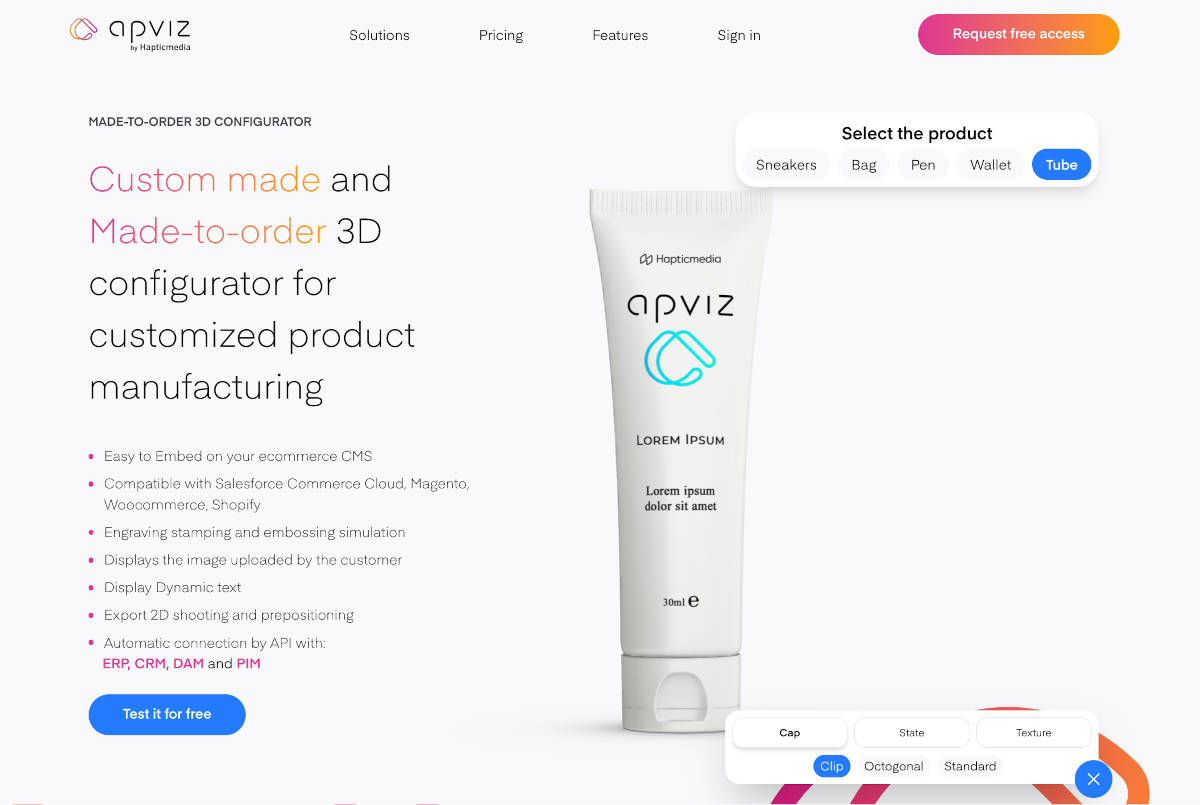 Apviz.io Made to order 3D configurator
Apviz.io Made to order 3D configurator
3D advertising is predicted to be a powerhouse for future marketing strategies. Here are important statistics that support the claim.
- Interactive 3D marketing campaigns have seen a 40% increase in conversions (VentureBeat).
- In a 3D marketing study by Cappasity, 82% of participants used the 3D product view. In addition, the study says, "95% of respondents preferred an interactive 3D experience to video playbacks" (Cappasity).
- Amazon has discovered that user engagement increased by 66% with a 3D technology configurator compared to 2D marketing solutions.
Immersive visualization advertising is set to take the next step with 3D marketing. A recent study by YuMe found that virtual reality ads are rather effective, aiding in same-day recall (prospects being reminded of a brand on the same day post seeing their 3D ad) for 70% of users.
A global study from Freeman found that more than one in three CMOs expected to spend 21% to 50% of their budgets on experiential advertising.
The Dynamic Synergy of 5G and 3D visualization
The rollout of 5G accelerates the possibility of offering interactive 3D marketing campaigns. Thanks to its very high bandwidth, 5G paves the way for new, even more immersive customer experiences.
5G networks are projected to reach 1 billion subscribers by 2023, accounting for approximately 20% of the global population. The gradual and ongoing rollout of 5G is expected to reach this milestone. This expansion will inevitably increase opportunities to offer enriched content with higher added value for marketing.
These statistics demonstrate that the benefits of 3D marketing aren’t just hype; they're the reality. Let's now delve into some of the specific advantages of incorporating 3D marketing campaigns for your retail or e-commerce business.
Exploring the Standardization of 3D Web Formats
In the dynamic landscape of 3D marketing, the standardization of 3D web formats emerges as a pivotal element for fostering widespread accessibility, collaboration, and innovation.
Standardization, aimed at enabling interoperability of 3D models and sharing between different platforms and tools, is necessary for the numerous applications of the 3D Web. This becomes paramount to bridge the gaps between these applications and ensure a cohesive 3D web ecosystem.
Several projects and formats have been developed with this goal, such as:
- glTF: The Khronos Group consortium is currently working to establish WebGL 3D visualization standards by defining the glTF file format.
- USD: Developed by Pixar for its production management, the USD format offers a 3D work organization format for defining 3D assets, environments, and materials.
The benefits of 3D marketing campaigns [with case studies]
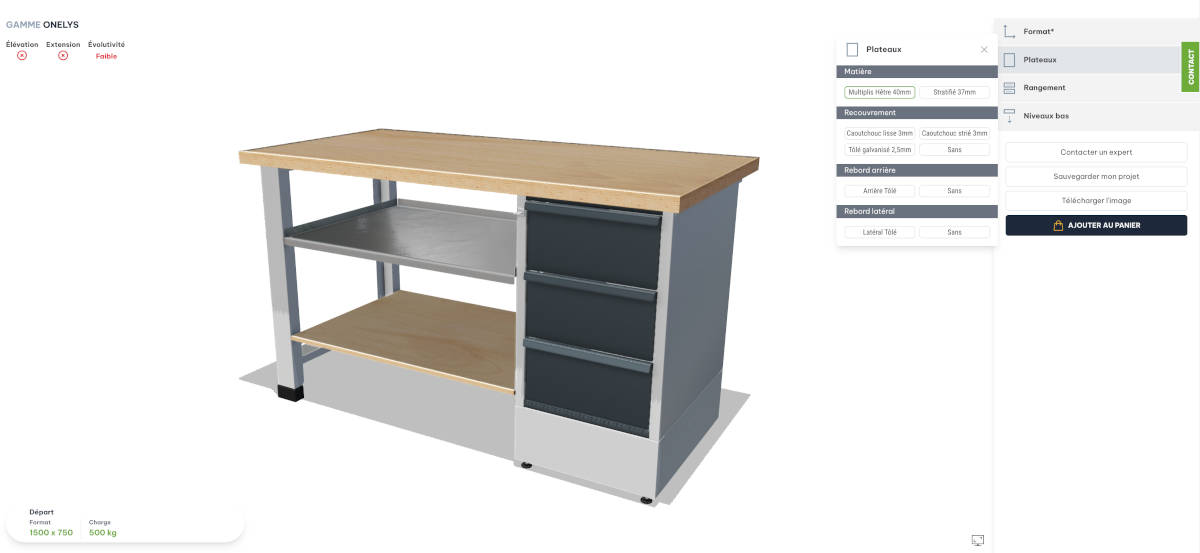 A complex product such as a workbench becomes even more interesting when presented with a 3D configurator.
Discover the Workbench 3D configurator Provost
A complex product such as a workbench becomes even more interesting when presented with a 3D configurator.
Discover the Workbench 3D configurator Provost
3D marketing campaigns take the customer experience up a notch. It helps marketers create advertisements that do not feel like one. To customers, these 3D marketing ads are valuable brand experiences that encourage them to make a purchase.
Let's look into how your brand can benefit from a 3D marketing campaign.
1. Better conversions with 3D product configurator
Configurable 3D ads give customers the unique ability to personalize and modify products in real-time within banner ads, giving them a chance to see how a shoe would look on their foot, for instance.
Fred jewelry and Puma are revolutionizing their marketing campaigns with 3D product configurators. Customers can change the size and color of the shoes and see them from all angles. With a call-to-action (CTA) button right at the bottom, the cycle to decision-making is also shortened.
2. Enhanced customer engagement through 3D experiences
Using 3D visualizations in your marketing campaigns can give your customers a more in-depth view of your product. This not only allows them to see it firsthand but also lets them explore its features and buy with confidence after viewing the product from all angles as shown by the 3D model.
Imagine walking into a boutique furniture and home goods store. You're able to walk around the entire shop, see what's on display from every angle, and see what products look like in different sizes and colors. All without being bothered by pushy salespeople or crowded shelves that make browsing difficult.
3D marketing is making this experience possible for everyone who has a laptop or smartphone. Customers can explore a product with a 360-degree view to help them understand what the item is made of and visualize how it would look in their interior.
IKKS offers customers a 3D configurator to customize their iconic "111" bag. Choose a base 'bag', a 'shoulder strap' and a 'clutch'. You can mix and match these three elements in different colors and materials.
Thanks to the 3D visualization, the bag can be seen, placed, worn or viewed on a silhouette. IKKS evolves its offer over time, regularly proposing new materials and designs. The initial shape remains the same, only the materials and colors change and evolve.
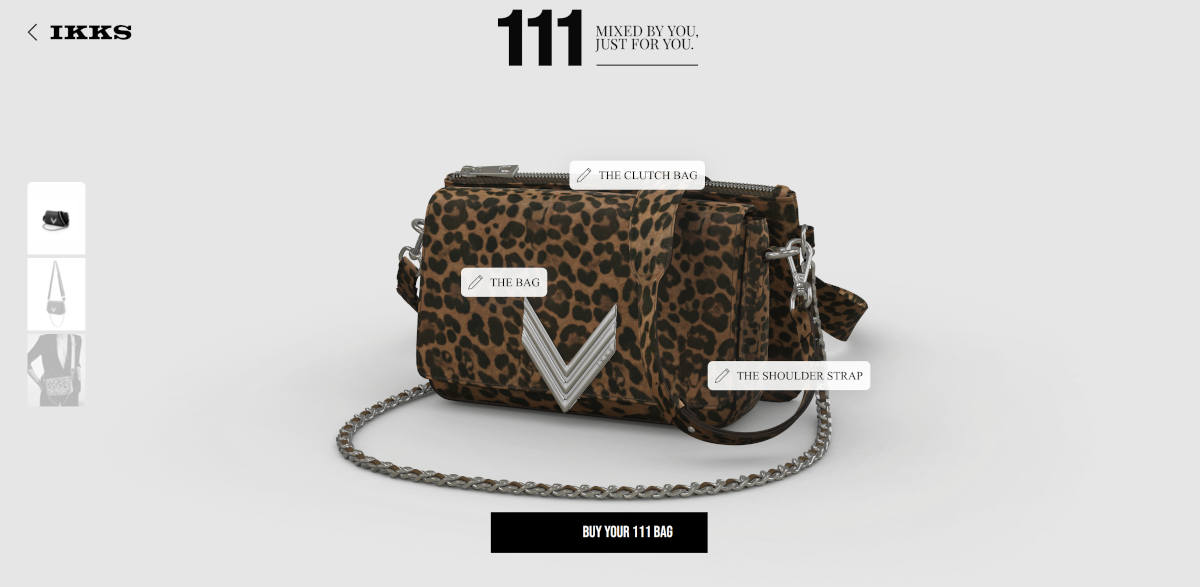 Try IKKS Custom bag 3D configurator
Try IKKS Custom bag 3D configurator
3. Improved profits for brands via 3D ads
3D ads are a very convenient and cost-effective way to market your products online. 3D advertising will increase profits because it attracts more consumers who can buy what they want with better purchasing decisions converted into loyal customers.
Fred is a jewelry manufacturer that uses a 3D configurator to customize its iconic Force 10 bracelet. You can combine your choice of bracelet and buckle with a wide range of colors and materials. Then Try On your bracelet from the e-commerce site and via your webcam or smartphone camera thanks to Augmented Reality (AR).
How can you create a 3D marketing campaign?
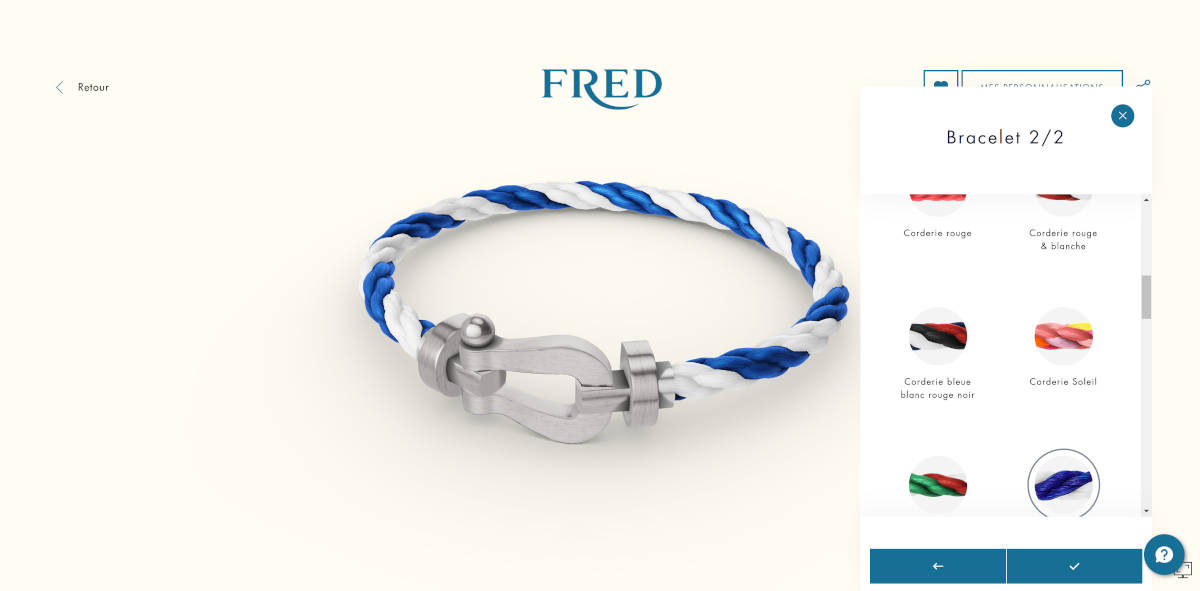 Image credit: Fred Jeweler
Image credit: Fred Jeweler
Now that you’re excited about the above case studies and benefits, are you ready to create your very own 3D marketing campaign? You can get started in just three steps:
1. Define your marketing goals
Before you get started, consider what your 3D ad should be used for. Are you hoping to promote a particular product by allowing users access from all angles? Or would you like to create something more immersive that will catch the attention of people and draw them in, such as a Virtual Reality experience?
Also, ask yourself what kind of products a 3D ad showcases. If it's not interesting or doesn't benefit from being shown in 3D, then a 3D display ad might not be right for you.
For example, if you have products that can't be customized or for which interactivity isn't of interest, it may be better to invest in 3D advertising for those for whom it makes sense to be shown in 3D. Which will give you a higher ROI.
The future of marketing is in the hands of those who embrace 3D marketing for 3D products. With the rollout of 5G, interactive 3D campaigns will soar to new heights, offering even more immersive experiences. As 5G networks reach one billion subscribers, businesses can tap into a vast audience and deliver enriched content with greater value.
The benefits of 3D marketing are a reality that businesses must embrace. Whether you're in retail or e-commerce, integrating 3D marketing campaigns into your strategy isn't just a trend; it's a strategic move toward a future where consumer engagement is not just visual, but experiential. The era of 3D marketing has arrived, and those who embrace its potential will undoubtedly lead the way in engaging audiences and shaping the future of marketing.
But do ensure that your goals are SMART:
S: Specific
M: Measurable
A: Attainable
R: Relevant
T: Timely
As a starter, you might want to try the following common marketing goals:
- Augment brand awareness (can be rendered by 3D immersive experiences)
- Generate more sales (implement this by using customizable 3D products)
- Increase profits
But note that these above examples are not SMART. The goal to augment brand awareness is considered a SMART goal only when it is written as below:
“Increase brand awareness on Instagram by 25% by gaining [n] followers by the end of next month.”
Here’s the breakdown of the SMART analysis on the goal:
Specific: Increase brand awareness
Measurable: 25%
Attainable: [n] followers
Relevant: The overall goal is relevant to your key business objective, which is to drive sales and make profits
Timely: End of next month
Read this article from the University of California to learn more about SMART goals.
2. Build your 3D model and choose your marketing platform
The second step to launching your 3D marketing calls for you to craft the 3D model and decide on the platforms to air your advertisements. You can include a 3D model inside your immersive display advert by collaborating with industry-leading service providers like Apviz.
Also, you might want to consider the possible ad interactions you'd want for your users. Generally, immersive ads allow for scrolling, zooming, and full-screen experiences.
Scrolling is a 3D experience that allows your users to rotate the 3D model and visualize it from different angles. By zooming, users can get a close-up view of the object. And with a full-screen option, your target audience can see a full-screen version of the ad and interact with it more intuitively.
In addition, you could also leverage new technologies like 3D configurators, Virtual Reality and Augmented Reality to take your 3D marketing campaign to the next level.
This way, users would be able to customize the product in real-time, inside your ad. If they like it enough, your investment in the 3D marketing ad will likely generate sales. So do consider the use of 3D ads on your e-commerce product pages and in your social media marketing.
3. Measure the results
Once you get your 3D model ready, publish it using the Google Marketing Platform. And don't forget to track the results. Here are the Key Performance Metrics (KPIs) you should measure:
- Number of impressions
- User engagement
- Click-through rate (CTR)
- Session time on ads
Ready to generate conversions with 3D marketing?
3D marketing is empowering marketers and marketing agencies with a greater return on investment (ROI). From brands to real estate to the auto industry, 3D marketing has great benefits for all market landscapes.
Projects, such as Mark Zuckerberg's Metaverse, will undoubtedly create new marketing opportunities. Somewhere between virtual reality and online social networks, the metaverse proposes shared virtual worlds where people can interact via a 3D avatar.
If you're ready to reap the benefits of 3D, you only need to invest in one marketing solution tool — Apviz. This software as a service (SaaS) software specializes in 3D configurators, Virtual Try-On, Augmented Reality, Virtual studio photo, 3D product customizations, and more.
By Yahong Zhang - Thu Feb 01 2024